
Macs are highly reliable—both in terms of hardware and software. However, “highly” isn’t the same as “completely,” which is why it’s not unheard of for Macs to get stuck on the loading screen. If that’s the problem you’re dealing with, there are several steps you can take to resolve this issue. In this article, I’ll explore how to fix a MacBook that’s stuck on the loading screen and won’t load, providing you with easy-to-implement solutions and heaps of practical advice.
Table of Contents
Why Would Your Mac Be Stuck on the Loading Screen?
There are many reasons why your Mac might not boot past the Apple logo. Some of the most common are:
- 💾 Corrupted system files: critical macOS files may have become damaged or corrupted and now prevent the system from booting properly.
- 🔄 Bad macOS system update: it happens rarely, but Apple has released problematic macOS updates in the past, especially those that are still in beta.
- 💽 Failing hard drive: a malfunctioning storage drive can prevent your Mac from accessing the necessary boot files.
- 🦠 Virus or malware: while Mac users face a much lower risk of a malware infection than their Windows counterparts, dangerous strains of macOS malware do exist.
- 🚀 Problematic startup items: applications or services set to launch at startup can interfere with the boot process if they’re incompatible, outdated, or corrupted.
- 🔌 Power issues: problems with your Mac’s power management system, battery, or power supply can interrupt the boot process.
- 👾 Incompatible kernel extensions: third-party kernel extensions that are incompatible with your current macOS version or full of critical bugs can cause boot failures.
- 🐭 Boot failure because of peripheral devices: You could have something plugged into your Mac that is causing it to not boot correctly.
Now that you know why your Mac might be stuck on the loading screen, it’s time for us to explain how you can get it to boot properly.
What to Do if Mac Is Stuck on the Loading Screen
Let’s take a look at how you can fix the issue of your Mac not loading. I recommend you try these methods in the order presented below. If you’ve already attempted one method without success, proceed to the next one.
Method #1: Unplug Everything From Your Mac and Restart It
To rule out conflicts with external devices, start by disconnecting all peripherals from your Mac. Once all devices are disconnected, perform a hard restart:
- Press and hold down the power button on your Mac until the screen goes black.
- Now that the screen is black, press and hold the power button and wait for your Mac to turn back on.
- Once the loading screen appears, see if there is an Apple logo. If there is, that means that the startup disk was found.
- Observe the progress bar and see if it makes it all the way through to the login screen.

If your Mac hasn’t made it to the login screen, then let’s move on to the next step.
Method #2: Reset the NVRAM/PRAM on Your Mac (Intel Processor Only)
NVRAM (nonvolatile random-access memory) is a small amount of memory that your Mac uses to store certain settings and access them quickly. PRAM (Parameter RAM) stores similar information, and the steps for resetting NVRAM and PRAM are the same.
NVRAM stores things such as your sound volume, display resolution, startup disk selection, time zone, and recent kernel panic information. It’s essentially like turning your Mac off and back on again but taking it to a deeper level.
If you’re using a newer Mac that has a T2 security chip, you can release the keys right after you see the Apple logo.
With your Mac not starting up, this might be a way to get it to boot.
- Press the power button on your Mac and then immediately press and hold OPTION+COMMAND+P+R and hold these keys for about 20 seconds.
- Your Mac will then boot up and hopefully take you to the home screen.
If this didn’t fix your issue, let’s move on to resetting your SMC on your Mac.
Method #3: Reset the SMC on Your Mac (Intel Processor Only)
The SMC or System Management Controller controls the physical components inside of your Mac. It handles things such as your Mac cooling fans, the power supply, and any other physical components. Resetting this might fix the issue of your MacBook being stuck on the loading screen.
The steps below will walk you through how to reset the SMC on your Mac.
- On your keyboard, press and hold the following keys: Control + Option + Shift.
- Keep holding down all three keys for 7 seconds, then press and hold the power button as well.
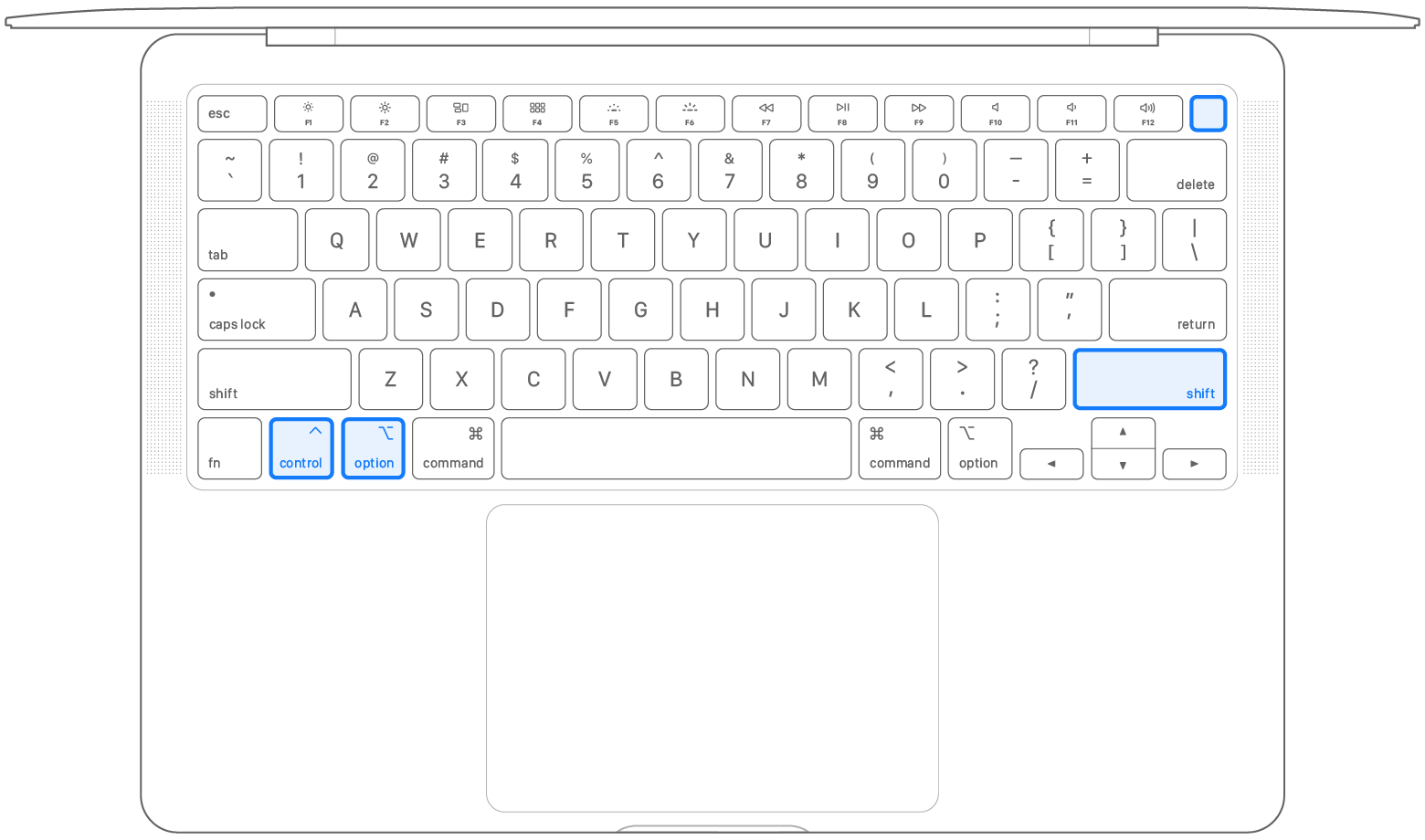
- Continue to hold all four keys for another 7 seconds, then release all of them.
- Wait a few seconds, then press the power button to turn on your Mac.
If following these steps didn’t fix the issue, the next one that you can move onto would be using the First Aid feature built into Disk Utility.
Method #4: Use First Aid to Fix Your Corrupted Mac Drive
First Aid is a feature built into macOS that allows you to find and repair disk errors. If your Mac is stuck on the Apple loading screen, this might be a way to fix that issue.
Let’s take a look at how you can use First Aid on your Mac:
- The first thing that you need to do is boot into Recovery Mode. There are 2 ways to do this and they depend on if you’re using an Intel Mac or Apple Silicon.
- Apple silicon: Turn on your Mac and continue to press and hold the power button until you see the startup options window. Click the gear icon labeled Options, then click Continue and this will bring you into Recovery Mode.
- Intel processor: Turn on your Mac, then immediately press and hold these two keys until you see an Apple logo or other image: Command (⌘) and R. You might have to hold these keys for a little bit of time to get into Recovery Mode.
- Now that you’re in Recovery Mode, you should see a list of options. First Aid is part of Disk Utility, so you want to first select Disk Utility which will then allow you to get access to First Aid. After selecting Disk Utility, you then want to click on the Continue tab.
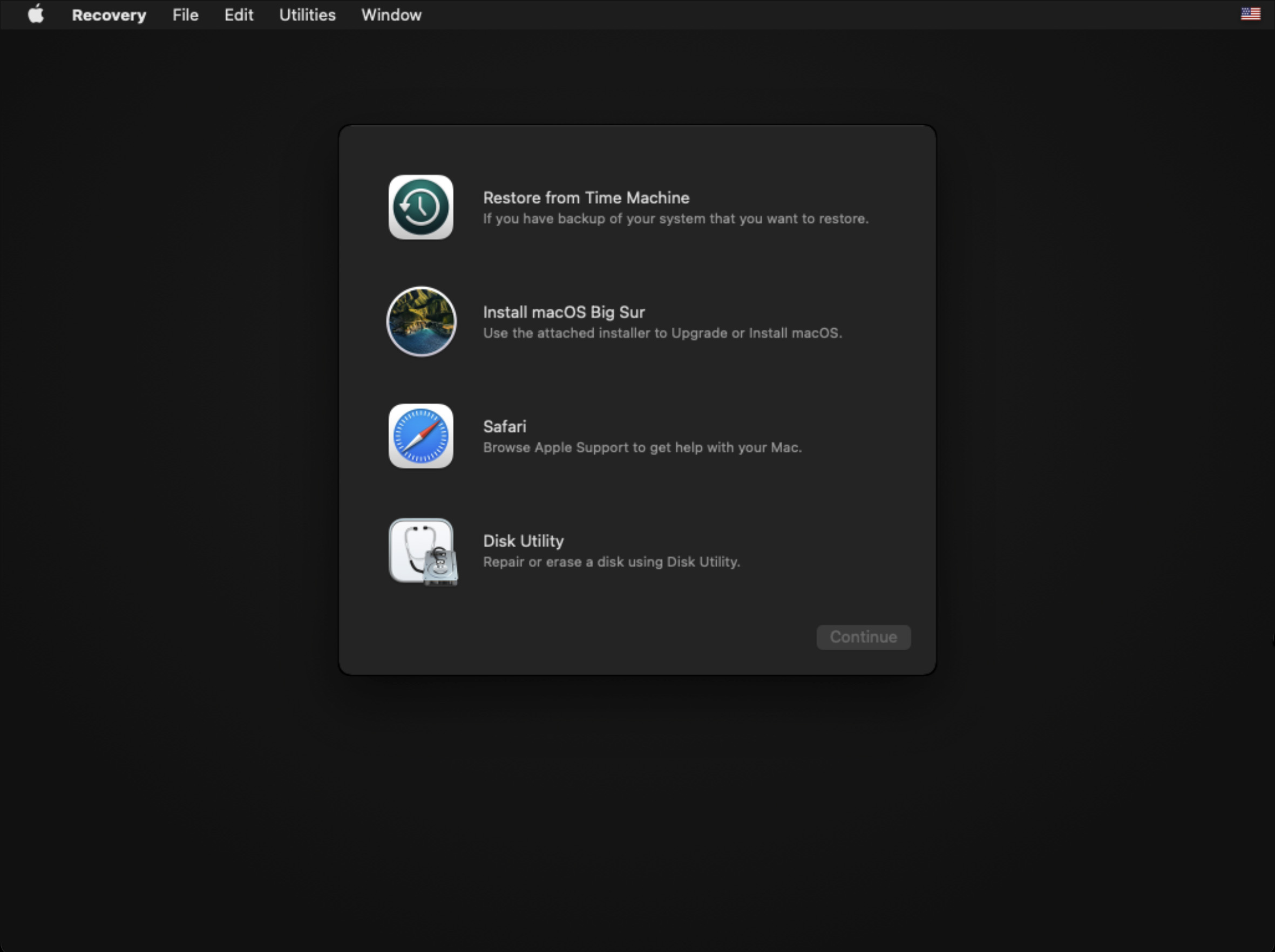
- Once within First Aid, select the startup disk or whichever disk you’re trying to boot from and run First Aid on it.
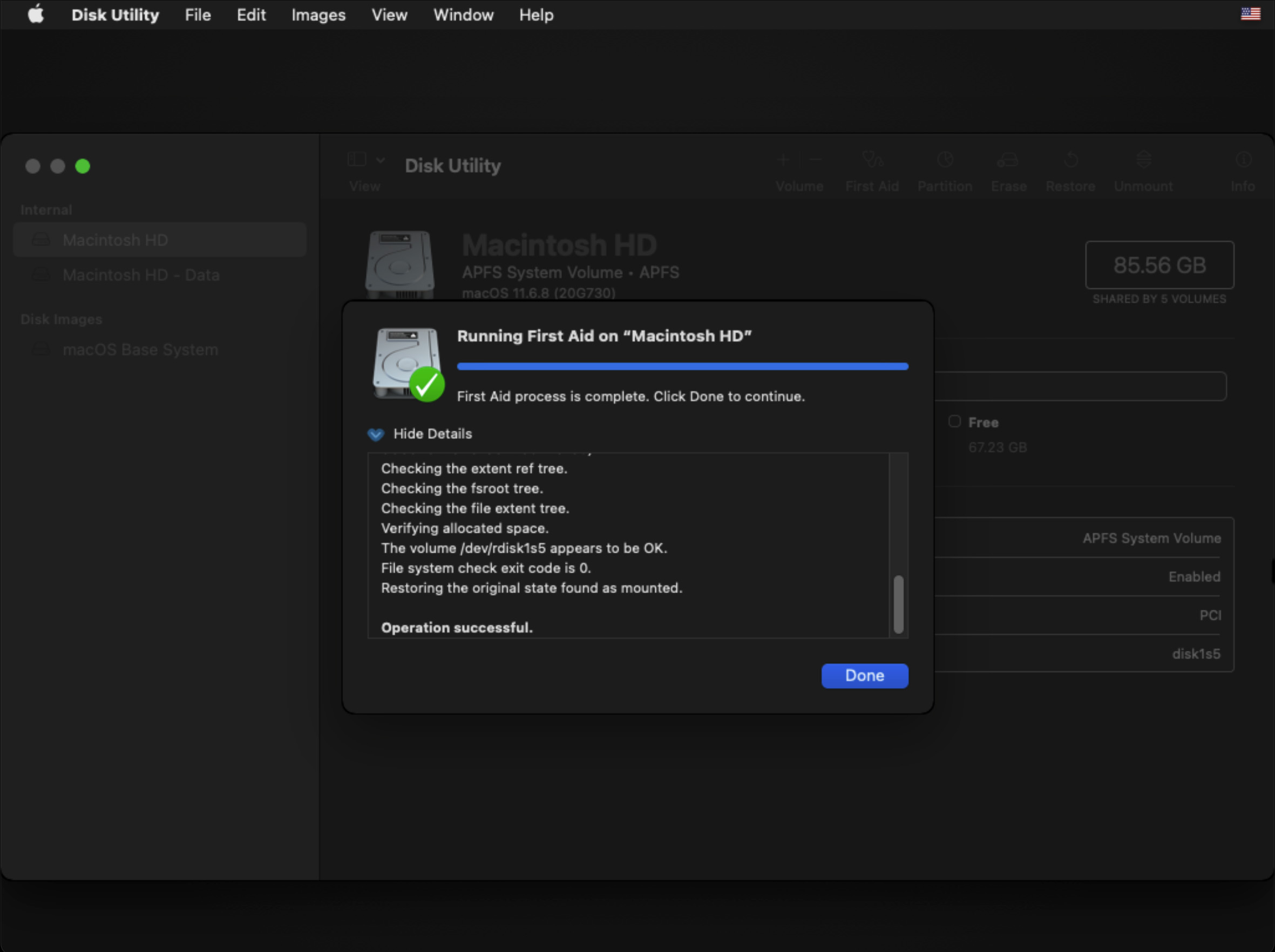
- Once First Aid has run and is complete, you should see a complete message like this one below.
- Turn off your Mac by going up to the Apple logo in the upper left-hand side and then choose Shut Down.
- Once your Mac has shut down, turn it back on and let it boot normally.
Hopefully, now your Mac being stuck on the Apple logo has gone away, and it has made its way to the login screen.
Method #5: Reinstall macOS if Your Mac Is Stuck on the Loading Screen
By reinstalling the operating system, you can recreate corrupted system files that are preventing your Mac from booting correcting.
While the process may seem daunting, it’s actually quite simple:
- Boot your Mac into Recovery Mode. There are 2 ways to do this and they depend on if you’re using an Intel Mac or Apple Silicon.
- Apple silicon: Turn on your Mac and continue to press and hold the power button until you see the startup options window. Click the gear icon labeled Options, then click Continue and this will bring you into Recovery Mode.
- Intel processor: Turn on your Mac, then immediately press and hold these two keys until you see an Apple logo or other image: Command (⌘) and R. You might have to hold these keys for a little bit of time to get into Recovery Mode.
- Once you see the Recovery Mode menu, select Reinstall macOS.

- Click through and accept the install prompts.
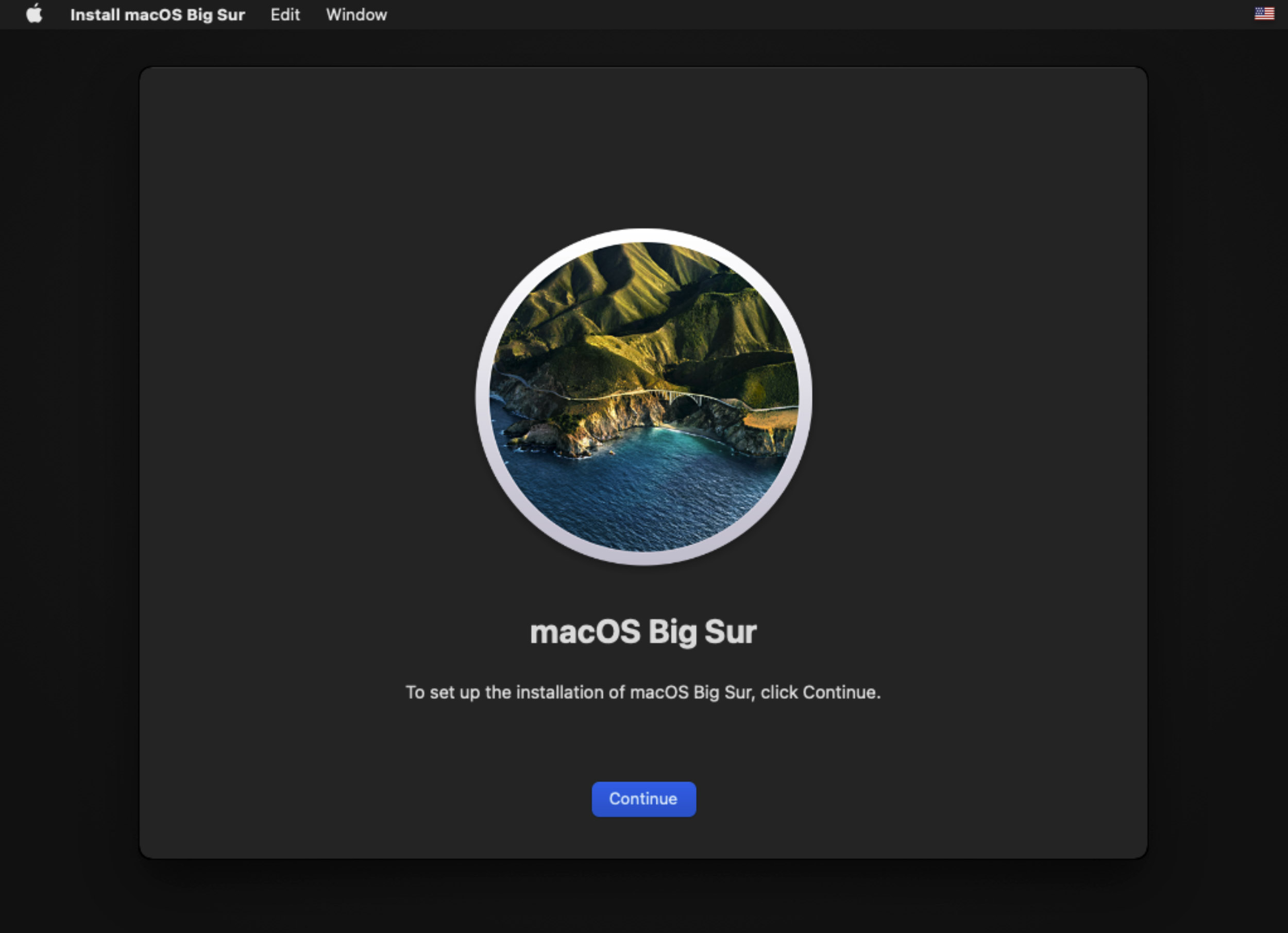
- Choose the hard drive that you would like to reinstall macOS to and then wait for the installation to complete. I also recommend that you leave your Mac connected to power during the installation process.
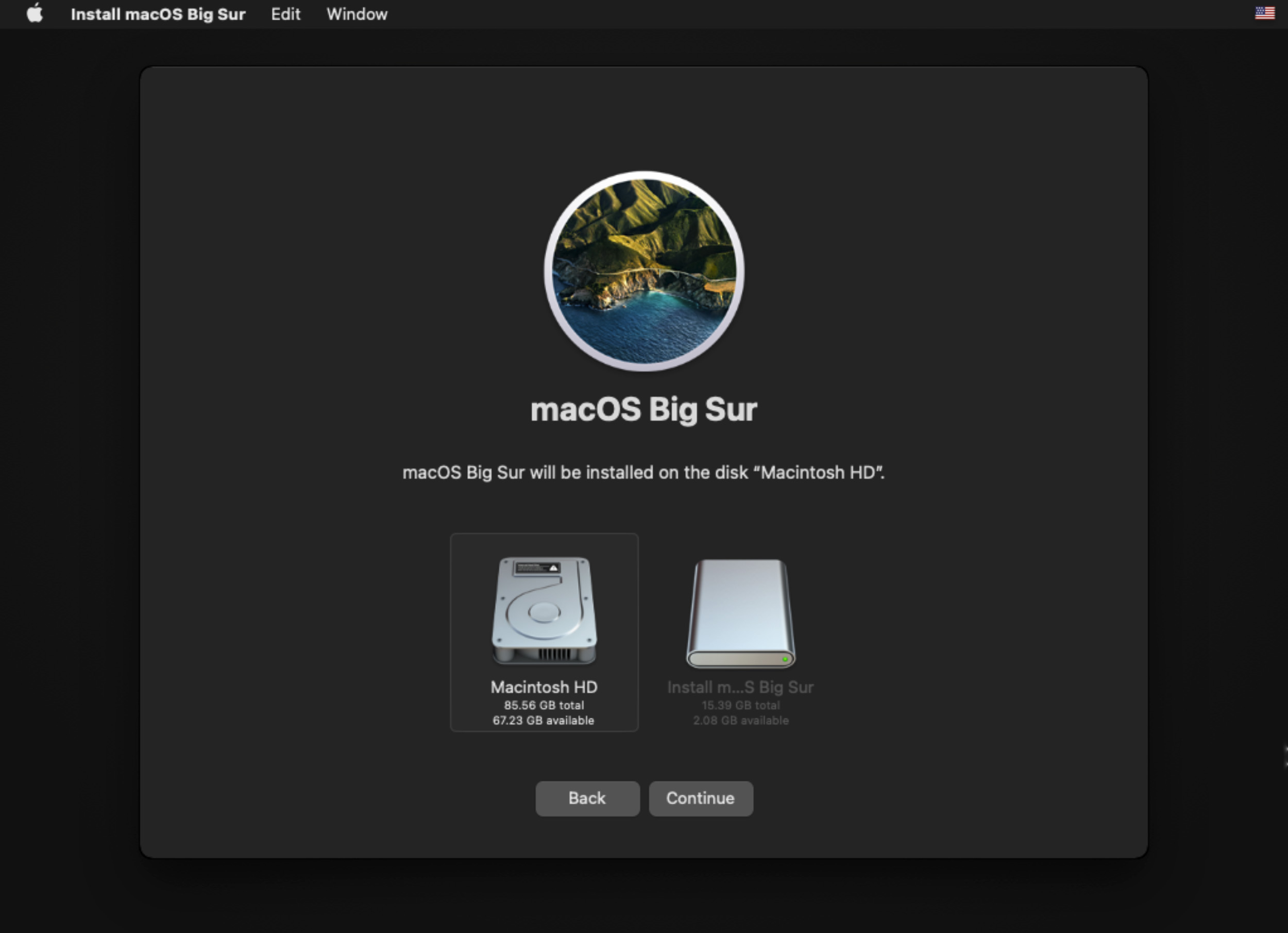
If your Mac still won’t load, let’s try booting into safe mode to see if the issue has to do with your startup disk.
Method #6: Boot Mac Into Safe Mode
Booting Mac into safe mode can help us figure out if there is an issue with your startup disk or if there is an app that is preventing us from being able to boot up.
When you start up in safe mode, your Mac prevents some software, such as startup items, from loading, and it performs a check of your startup disk. Your Mac may take longer to start up because of the check. Your Mac also might run slower and not be as responsive.
- Turn your Mac off by holding down the power button.
- Apple silicon:
- Press and hold the power button until you see the “Loading startup options” appear.
- Select volume.
- Press and hold the Shift key and then click on Continue in Safe Mode.
- Your Mac will then restart automatically. When you get to the login window, you should see “Safe Boot” in the menu bar.
- Intel processor:
- Turn on your Mac and then immediately press and hold the Shift key until you see the login window.
- Type in your login information to sign into your Mac.
- If it prompts you to log in twice, put in your credentials again.
- You should see “Safe Boot” in the menu bar on either the first or second login window. You can also go to Above This Mac and then click on Software and next to boot mode it will say either normal or Safe Mode.
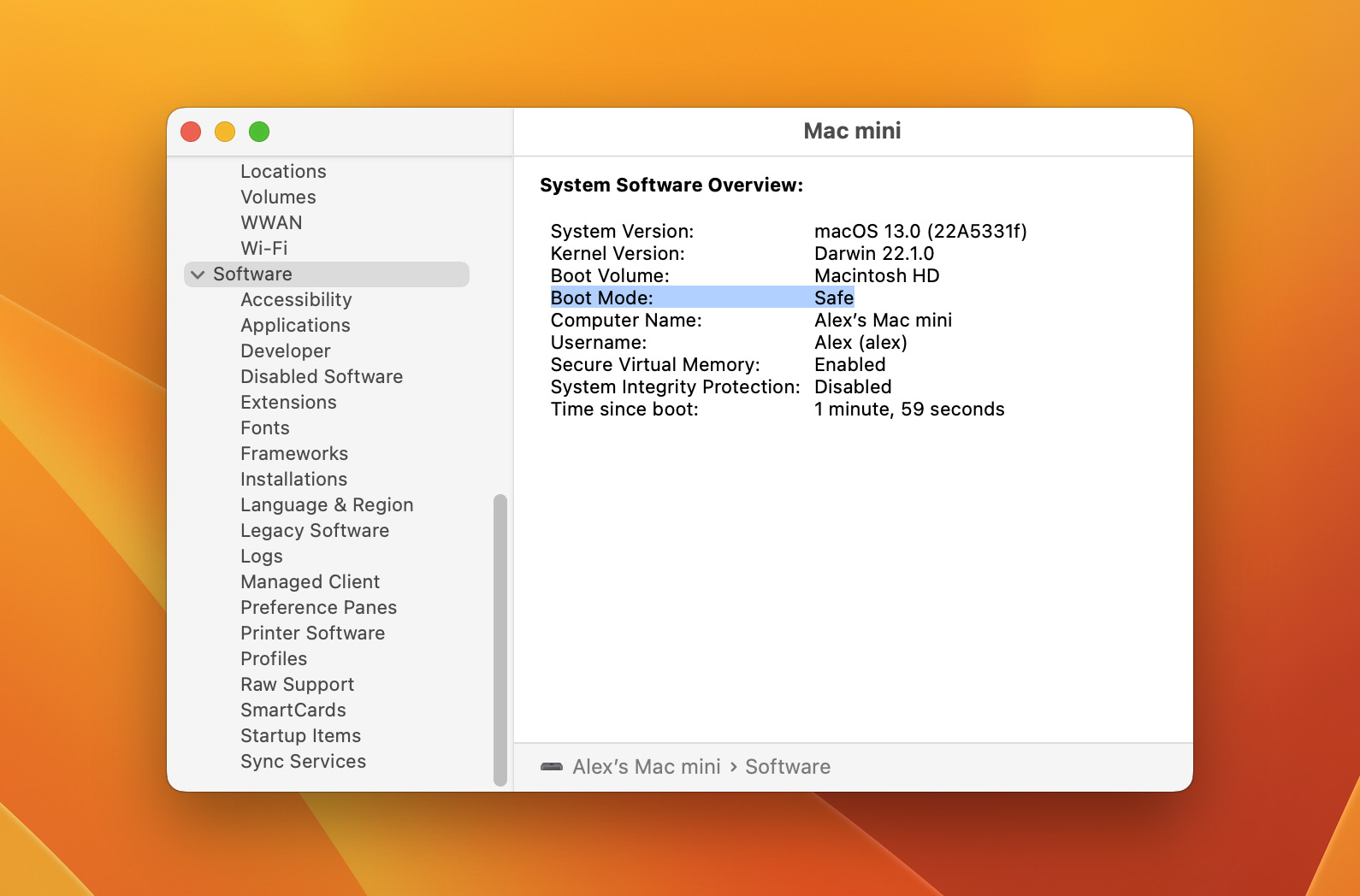
Once in Safe Mode, you should check how much free disk space you have on your system drive by going to Apple menu > About This Mac > Storage. If you’re running low on free disk space, then you need to delete unnecessary files or move them to an external drive.
Next, disable all non-essential login items. You can do this from System Settings > General > Login Items. Finally, run a reliable Mac malware scanner such as Malwarebytes to check for any potential malware infections. You can then restart your Mac, and it should boot properly.
How to Get Data From a Mac Stuck on the Apple Logo
Sometimes no matter what you do, you might not be able to fix your Mac and get it past the Apple loading screen with the stuck progress bar. If that’s the case, then it’s time to take a look into recovering the data from your Mac as you don’t want to leave important data on it..
Disk Drill is a data recovery app that you can use to recover files on your computer even if your MacBook Pro freezes on startup and won’t get past the loading screen. Why do I recommend Disk Drill? There are a couple of main reasons:
- It has the ability to run even if your Mac won’t boot, we’re going to run it in Recovery Mode below.
- Downloading and scanning for your data is free, there is no purchase required unless you find and then want to recover your data.
- It works on all Macs, even the new Apple silicon ones.
- Disk Drill is exceptionally easy to use and feels like an Apple-designed Mac app.
- The data recovery algorithms included in Disk Drill support hundreds of file formats and all standard Mac file systems.
Let’s walk through how to recover data using Disk Drill, it’s actually quite easy and we will assume that your Mac won’t boot and start from there.
- Press and hold the power button to power down your Mac.
- Turn on your Mac and boot it into Recovery Mode.
- Apple silicon: Turn on your Mac and continue to press and hold the power button until you see the startup options window. Click the gear icon labeled Options, then click Continue and this will bring you into Recovery Mode.
- Intel processor: Turn on your Mac, then immediately press and hold these two keys until you see an Apple logo or other image: Command (⌘) and R. You might have to hold these keys for a little bit of time to get into Recovery Mode.
- You now need to launch the Terminal so that you can use Disk Drill. Once within Recovery Mode, click on Utilities and then select Terminal.
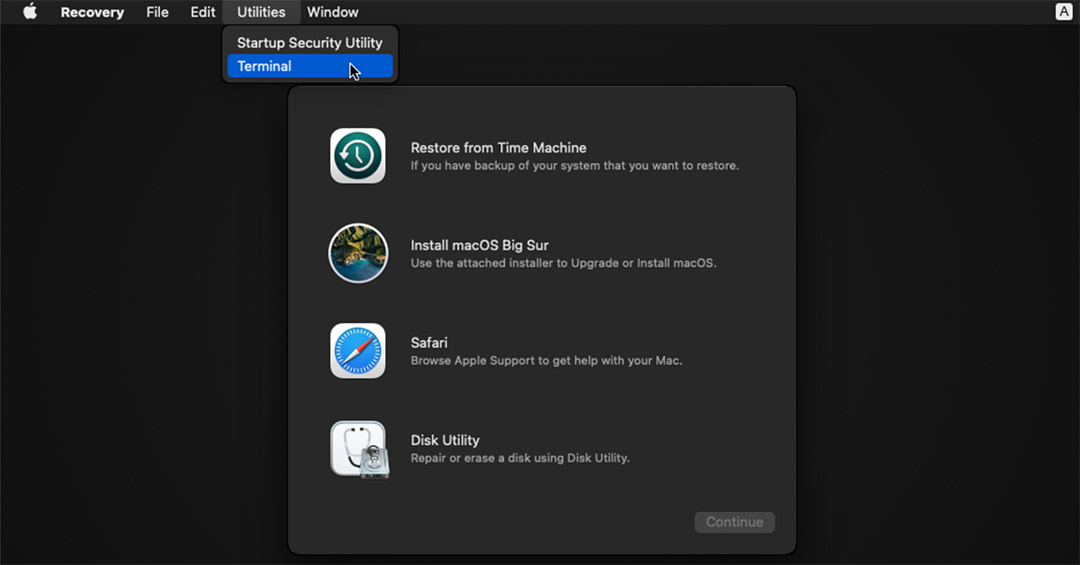
- Enter this command within a new Terminal window to launch Disk Drill
sh <(curl http://www.cleverfiles.com/bootmode/boot.xml) This will download and launch Disk Drill right from within Recovery Mode.
- Press Return on your keyboard after you’ve inserted the command.
- Disk Drill will now launch within Recovery Mode and you will now be able to recover any files that you want to save by selecting your system drive and clicking the Search for lost data button.
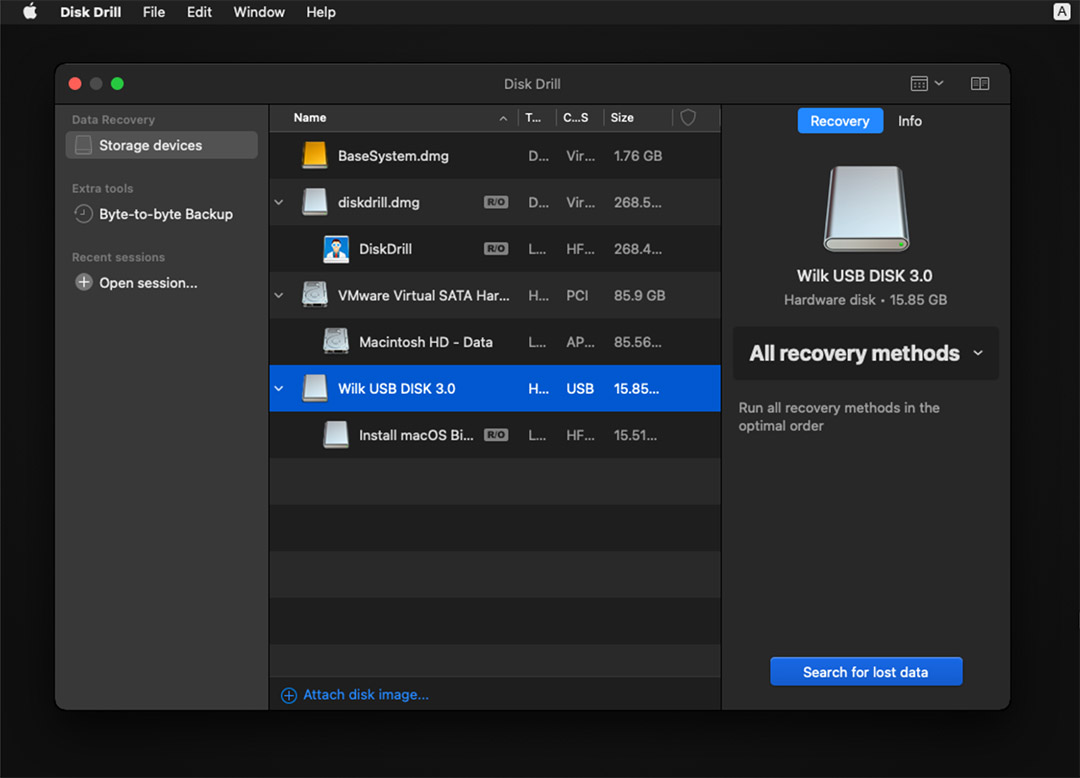
Alternatively, you might be able to recover your data using your Time Machine backup disk, but this method only works if you’ve previously set up and used Time Machine backups.
FAQ
If you’re able to get your Mac all of the way to the login screen then it should load. If it won’t load past the login screen, I recommend just a simple shutdown and then power it back on. If that doesn’t fix the issue, refer above to the article sections NVRAM and SMC resets as those should fix the issue. Lastly, if those don’t I would take a look at how to reinstall macOS.
If your Mac is stuck in Recovery Mode, turning it off should fix this issue. Simply hold down the power button until your Mac powers down and then press the button to turn it on again and it should boot up normally if your Mac is working correctly.
If your MacBook Pro is frozen, you can press and hold the power button until the screen goes dark. Once it turns off, then press the power button and wait for it to boot.






